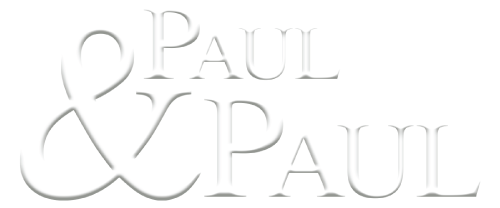The Costs to File a Patent Can Be Considerable. With a Little Research and Some Professional Assistance, You Can Keep Costs Down and Get a More Comprehensive Patent.
You have a great idea you’re excited about and want to get patent protection as soon as possible. But getting your invention patented is just the beginning of the expenses you will encounter when trying to get a new product to market. Doing some research and extra work at the forefront can help save you money on your patent application costs and help ease the process.
How Much Does it Cost to File a Patent Application?
Patent application costs will typically fall into one of three categories: filing fees to the United States Patent and Trademark Office, drawing fees, and attorney fees. These can cost the inventor anywhere from several hundred dollars to several thousand and will vary by how simple or complex the invention is and what type of patent you are applying for.
Many factors will affect what your patent application costs will ultimately be. These will include:
● The complexity of your invention – Patents for more complex inventions are often more expensive because of the cost of preparation.
● Market opportunities for the product – In a strong market, inventors often put more effort into the patent application process to ensure the greatest protection.
● Similar patented products – In a crowded market with similar products, an inventor will want to take extra care to support their product’s novelty.
● The size of the enterprise applying for the patent – Individuals and small businesses typically pay less than large companies when applying for a patent.
● Geographic scope of the patent – Whether you only want to protect your invention here in the United States or internationally, the cost of protection will be higher for patents that are broader in their geographic scope.
The bulk of costs for your patent will be to the individuals preparing the application, preparing the drawings, and representing your legal interests. The more preparation, research, and time you have put into the patent application process, the less possibility there will be for objections and time-consuming and costly litigation.
Deciding Between a Provisional Vs. Non-Provisional Patent
Applying for a provisional patent is less expensive than filing for a non-provisional one, but like anything else, you get the protection you pay for.
A provisional patent is a type of preliminary patent. Once a provisional patent is filed, you will have one year of protection for your invention. A non-provisional patent is a full patent that protects your intellectual property from the beginning for the entire term of the patent. While some inventors take the provisional patent approach while they are still making refinements and anticipating changes, a non-provisional patent offers more protection and will need to be filed after the year period anyway to maintain protection.
Doing a Prior Art Search
In order to obtain a patent, your product must meet the novelty and nonobviousness criteria. Just because your invention is not yet on the market does not mean that there isn’t an existing patent for something very similar to your invention.
Conducting a professional prior art search will allow you to avoid possible infringements, reveal where there may be possible objections by others, and let you understand your competition and how commercially useful their granted patents have been.
Free database services can generally be accessed at local or national patent offices to conduct a prior art search. These offices can also offer information about subsidies and grants that may be available to you.
Providing the Patent Office With the Best Drawings and Descriptions Possible
The system is highly regulated, making patents much more challenging to get. Researching your market and other patents on the PTO website will help you understand how to best prepare your patent application.
The more details and information you can provide about your invention and other possible alternatives, the better chance you have of obtaining a strong patent to protect your product.
Is Having a Patent Attorney Worth the Cost?
Unfortunately, many patents are rejected after filing. Small mistakes can derail your patent application and hurt your approval. While these rejections can be appealed, the appeal will cost even more money.
While patent attorney services do come at a price, these services often save money, in the long run, to ensure that the patent application is correct, well-supported, and the process progresses quickly and efficiently. At Paul & Paul, our experienced Philadelphia, PA patent attorneys have extensive expertise in patent law and many other technologies, giving us a unique understanding of our clients’ needs, requirements, and IP objectives. If you have an idea or product that you are considering bringing to market, let us help guide your patent application and assist you with your IP needs. Call us at (215) 568-4900 or fill out our online contact form.
This website is designed to provide only general information. The information presented on this website is not formal legal advice. You should not rely on any general information from any source for making legal decisions. Each legal matter is unique and requires specific attention from a qualified and experienced attorney. Unless a representation agreement has been signed with Paul & Paul, we are not your legal representatives.
